▼ MoEF: No dilution of emission norms for power [03-31-17]
 Indicating that coal based power plants across the country will not be given any leeway, MoEF has made it clear that it will not dilute the emission norms for thermal power plants, as notified on December 7, 2015, to minimise air pollution. Indicating that coal based power plants across the country will not be given any leeway, MoEF has made it clear that it will not dilute the emission norms for thermal power plants, as notified on December 7, 2015, to minimise air pollution.
Nor will it relax deadline for implementation of the stricter standards.
The revised emission standards for thermal power plants was notified with respect to PM, SO2, NO2, Hg and water consumption on Dec 7, 2015 and shall come into force from Dec 6, 2017.
This will dispel all doubts over the implementation.
The minister noted that the assessment in respect to level of implementation would be done only after these standards come into effect.
Besides notifying new emission norms in 2015, the government had taken other steps to clean up the environment in areas adjoining thermal power plants.
It included installation of continuous emission/effluent monitoring systems (CEMS), revised norms for fly ash utilisation.
Also included are industry specific action plans for critically polluted areas where significant number of thermal power plants are located and development of green belt in surrounding areas.
MoEF's Stance: Know More
- According to the ministry, 142 out of 162 standalone power plants have so far installed CEMS.
- Among these, 102 have also initiated online transmission of emission/effluent data to Central Pollution Control Board (CPCB) whereas six plants have installed flue gas de-sulphurisation (FGD) system for control of SO2 emissions.
- The ministry seeks to have a mechanism in place to monitor implementation of emission standards.
|
▼ SC: Public health important, change to BSIV [03-30-17]
 In its order, an SC bench comprising Justices Madan B Lokur and Deepak Gupta said that even though the BSIII inventory is smaller than the total stock of vehicles in the country, public health is far more important than commercial interest of manufacturers. In its order, an SC bench comprising Justices Madan B Lokur and Deepak Gupta said that even though the BSIII inventory is smaller than the total stock of vehicles in the country, public health is far more important than commercial interest of manufacturers.
This was a landmark judgment, upholding people's right to breathe clean air.
The particulate matter (PM) emissions from commercial vehicles will reduce by up to 80% with the transition to BS-IV.
In two-wheelers, hydrocarbon (HC) and oxides of nitrogen (NOx) emissions will reduce by 41-80%, depending on the engine size.
The analysis based on Society of Indian Automobile Manufacturers' submission in the SC had revealed that many companies continued production of BS III vehicles in large numbers between January and March 2017.
According to the industry data, there are about eight lakh unsold BS-III vehicles in the country.
These include 96,724 commercial vehicles; 6,71,305 two-wheelers; 16,198 four-wheelers and 40,048 three-wheelers.
The industry asked for a year to clear the unsold stock.
The transport ministry's notification on transition to BS IV had come two years ago.
The amicus curiae in the case, Harish Salve, said in his affidavit to SC that the transition to BS IV is a critical step to combat toxic air pollution in the country.
The note recounts that the SC-mandated Environment Pollution Control Authority (EPCA) had given a prior notice to automakers so that BS III inventories can be reduced and manufacture of BS IV vehicles can be started.
BS Norms: Know More
- Bharat stage emission standards' are emission standards instituted by the Government of India.
- It is to regulate the output of air pollutants from internal combustion engine equipment, including motor vehicles.
- The standards and the timeline for implementation are set by the Central Pollution Control Board under the Ministry of Environment & Forests and climate change.
- The standards, based on European regulations were first introduced in 2000.
|
▼ Bengaluru gets India's first organic vertical garden [03-27-17]
NGO Say Trees has launched India's first organic, vertical garden in the Garden city of Bengaluru.
Using 10 varieties of plant species, the group has planted more than 3,500 saplings on a pillar of Hosur Road, a popular flyover in the city.
The installation is maintained by an automated drip irrigation system that ensures the plants receive their daily dose of 100 milliliters of water.
Apart from improving the city’s aesthetics, vertical gardens also help in reducing smog and air pollution.
Among its many other functions, is that having green walls providing thermal insulation for buildings help in decreasing the demand on power, noting that, as a result, fewer polluting by-products are released into the air.
After getting positive response to its vertical garden on a pier of the Electronics City flyover, Bengaluru-based nonprofit SayTrees now plans to replicate the same on more than 250 piers of the elevated tollway.
The vertical garden on one pier has more than 3,500 saplings of 10 varieties.
The group six mini-forests, including three in Yeshwantpur and one in Kalyan Nagar. The major challenge is availability of safe land.
17,000 saplings they planted in June 2016 required six lakh litres every month.
The vertical gardens required less water while making Bengaluru roads green once again.
These saplings in the vertical garden are watered through automatic drip irrigation. They don’t require more than 100 ml water per day.
|
▼ Earth Hour turns 10 [03-27-17]
Lights were switched off around the world on 8:30 pm on 25th March 2017 to mark the 10th annual Earth Hour.
The aim was to draw attention to climate change.
The initiative began in Australia in 2007 as a grassroots gesture by the WWF Australia against man made carbon dioxide emissions linked to a warming planet.
The earth hour saw electric lights switched off for an hour in 7,000 cities across 172 nations at 8:30 pm local time.
The initiative aims to highlight the need to act on climate change and save a few MW of power in the process.
Earth Hour: Know More - Among famous structures in Australia taking part were Sydney's Opera House, the Harbour Bridge, Luna Park, Town Hall and Sydney Tower Eye.
- The list includes some of the best known skyscrapers and historic buildings including the tallest building in the world, the Burj Khalifa in Dubai.
- Other famous structures which took part include London's Elizabeth Tower, Parliament, Roman Colosseum, Blue Mosque in Istanbul, Eiffel Tower in Paris, Kremlin at Moscow and the Red Square as well as the Pyramids in Egypt.
- Earth Hour saw landmark environmental initiatives like the planting of a Ugandan forest, ban on soft plastics in Galapagos Island and a 3.4 million ha marine park in waters off Argentina as a result of principled activism.
|
▼ Arctic heatwaves, record ocean heat plague earth [03-24-17]
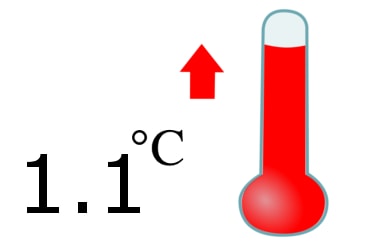 Extreme weather and climatic conditions including Arctic heatwaves have continued into 2017 after global temperatures set a record last year and the world witnessed exceptionally low sea ice and unabated ocean heat, according to WMO. Extreme weather and climatic conditions including Arctic heatwaves have continued into 2017 after global temperatures set a record last year and the world witnessed exceptionally low sea ice and unabated ocean heat, according to WMO.
Global temperatures have hit an astounding 1.1 degree Celsius above the pre-industrial period,
Global sea level touched record highs and planet's sea ice coverage dropped more than 4 million square kms below average in Nov.
The increase in global temperature is in line with other changes in the climate system.
With CO2 levels in the atmosphere breaking fresh records, influence of human activities on the climate system has become more obvious.
Each year since 2001, there has been a 0.4 degree Celsius above the long term average for 1961-1990 base period used as a reference for climate change monitoring by the UN agency.
The 2016 heating was further boosted by the powerful El Nino weather system, during which global sea-level also rose very strongly.
Similarly, carbon dioxide (CO2) levels in the atmosphere reached the symbolic benchmark of 400 parts per millions in 2015 - the latest year for which WMO global figures are available.
This will not fall below that level for many generations to come because of the long-lasting nature of CO2.
The extreme weather patterns are continuing in 2017 adding that at least three times so far this winter, the Arctic saw what can be called the Polar equivalent of a heatwave, with powerful Atlantic storms driving an influx of warm, moist air.
At the height of the Arctic winter and the sea ice refreezing period, there were days which were actually close to melting point.
In the US alone, 11,743 warm temperature records were broken or tied in February, according to the US NOAA, said the UN agency.
NOAA/National Oceanic And Atmospheric Administration: Know More
- Headquarters: Silver Spring, Maryland, United States
- Founder: Richard Nixon
- Founded: 3 October 1970
- Parent organization: United States Department of Commerce
|
▼ NGT suspends EC for INO [03-21-17]
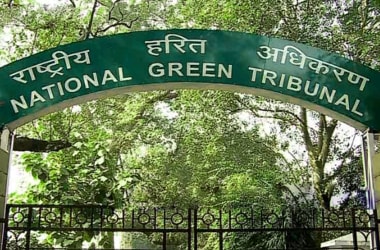 Southern Bench of the National Green Tribunal on 20th March 2017 suspended the environmental clearance granted to the India based Neutrino Observatory to come up in Theni and asked a fresh application for the project proponent. Southern Bench of the National Green Tribunal on 20th March 2017 suspended the environmental clearance granted to the India based Neutrino Observatory to come up in Theni and asked a fresh application for the project proponent.
Madhikettan Shola National Park in Idukki, Kerala is just 4.9 lm from the proposed site.
The TN-Kerala border was just a km away,making this, a category A project.
MoEF had called it a Category B project for which EIA is not necessary, but the department processed it as an additional measure.
Any project falling 5 km from the interstate boundary or within a notified national park or sanctuary to be considered a Category A project.
This requires numerous processes before EC is granted.
The INO promises to bring scientific advancement, according to Sekhar Basu, Chairman of DAE.
|
▼ River Ganga is first living entity of India [03-21-17]
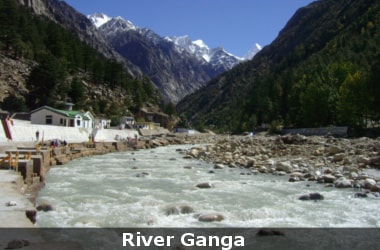 The Uttarakhand High Court has recognised river Ganga as the first living entity of India. The Uttarakhand High Court has recognised river Ganga as the first living entity of India.
This is a move that grants it the same legal rights as a human being.
The new status means that if someone pollutes the Ganga - considered to be the holiest river in the country - the law will see it equal to harming a human being.
The court also ruled that the government form a Ganga Administration Board for better maintenance and cleaning of the river.
River Ganga: Know More
- Length: 2,525 km
- Basin area: 1.08 million km²
- Mouth: Ganges Delta
- Sources: Gangotri Glacier, Nanda Kot, Satopanth Glacier, Kedarnath, Nanda Devi, Kamet, Trisul
- Cities: Varanasi, Haridwar, Allahabad, Kolkata, Patna, Kanpur, Ghazipur
|
▼ National Silt Policy to be launched [03-20-17]
To handle the threat of floods in many parts of the nation during Monsoon, the Union Government has aimed to come out with a national silt policy.
It will enlist measures to scientifically de-silt rivers that over the years, have lost the ability to hold water due to deposition of excessive silt.
The need for a national policy was flagged by Bihar CM Nitish Kumar after many districts in the state faced floods at the time of the monsoon.
Experts have blamed siltation of the Ganga river and its tributaries for this situation.
Many committees have been constituted in the past to look into the silting problems in Indian rivers and suggest remedial measures.
Admitting the silting of rivers has assumed serious dimensions across the year.
The general assumption is flood prone rivers are undergoing a change in carrying capacity, leading to rising flood levels.
Deposition of silt in the Ganga on account of slow discharge of water from West Bengal's Farraka Dam has led to flooding of 12 districts of the state.
A committee has been set up by the water resources ministry to formulate guidelines for desiltation of river Ganga from Bhimgauda in Uttarakhand to Farraka in West Bengal.
|
▼ NPL announces new atmospheric monitoring station [03-20-17]
National Physical Laboratory has established an atmospheric monitoring station in the campus of the Institute of Himalayan Bioresource Technology at Palampur, Himachal Pradesh at 1391m for generating the base data for atmospheric trace species and properties to serve as reference.
The aim is comparison of polluted atmosphere in India. At this station, NPL has installed state-of-the-art air monitoring system, GHG measurement system and Raman Lidar.
Numerous parameters like CO, NO, NO2, ammonia, sulphur dioxide, ozone, particulate matter, HC and BC besides carbon dioxide and methane are being monitored at the station.
On account of Palampur’s pristine air, and the capability of the new monitoring station for detection of small amounts of pollutants, the impact of faraway pollution sources can be measured precisely.
The data taken at this station during past one year shows that the pollution levels are far below the limits of National Ambient Air Quality Standards (NAAQS).
A new station has the experimental facilities to investigate the aerosol/cloud interactions, and such investigations would be helpful in generating a better understanding of the Earth’s climate system.
The data generated by pristine CAAQMS station at Palampur will act as background data for the measured pollution at various cities in the country.
The generated background data will be shared with different pollution control boards and agencies in the country so that the more precise pollution mapping traceable to standard values can be done.
This would assist policy decisions for the abatement of air pollutants.
About the CAAQMS Station - In India, air quality parameters are mostly measured in industrial and residential areas.
- The NPL’s station will also serve as a base station for inter-comparison of air quality monitoring equipment.
- The pristine CAAQMS station houses calibrated state-of-the-art-equipment for the continuous measurements of ambient and greenhouse gases (CO, NO, NO2, NH3, SO2, O3, PM1, PM2.5, PM10, hydrocarbons, black-carbon, CO2 & CH4), and weather parameters.
|
▼ NTPC installs largest floating solar photo voltaic plant [03-16-17]
 The NTPC Ltd in the second week of March 2017 installed India’s largest floating solar photo voltaic plant. The NTPC Ltd in the second week of March 2017 installed India’s largest floating solar photo voltaic plant.
This was at the Rajiv Gandhi Combined Cycle Power Plant (RGCCPP) Kayamkulam in Kerala.
The 100 kWp floating solar photo voltaic plant is the largest of its kind in India as on date.
This floating platform has been indigenously developed by the NETRA (NTPC Energy Technology Research Alliance) in partnership with Central Institute of Plastic Engineering & Technology (CIPET), Chennai.
The system was installed by Swelect Energy Systems Ltd, Chennai with the help from NETRA and NTPC Kayamkulam station in a short span of 22 days.
Floating solar photo voltaic plant systems are fast emerging as an alternative to conventional ground mounted photo voltaic systems, which are land intensive.
These have various benefits like conserving water through the reduction of evaporation, increased generation due to cooling effect on the panels and reduced installation time.
Installation potential of such type of systems in India is huge due to the abundance of water bodies.
The potential is approximately 800 MWp in various reservoirs in existing stations.
Due to availability of abundant water bodies, this type of system has a great potential in RGCCPP, Kerala.
NTPC: Know More
- NTPC is India’s largest energy conglomerate with origins planted way back in 1975.
- It aims to accelerate power development in India.
- Since then, it has established itself as the dominant power major with the presence in the entire value chain of the power generation business.
- From fossil fuels, it has forayed into generating electricity via hydro, nuclear and renewable energy sources.
- This foray will play a major role in lowering its carbon footprint by reducing greenhouse gas emissions.
|
▼ World's first fluorescent frog discovered! [03-15-17]
 The world’s first fluorescent frog has been discovered near Santa Fe in Argentina. The world’s first fluorescent frog has been discovered near Santa Fe in Argentina.
Scientists at the Bernardino Rivadavia Natural Sciences Museum in Buenos Aires made the discovery by accident.
They studying the pigment of polka-dot tree frogs, a species common across the continent.
In normal light the frog appears to have a dull, mottled browny-green skin with red dots, but under UV light it glows a bright fluorescent green.
Fluorescence – the ability to absorb light at short wavelengths and re-emit it at longer wavelengths – is uncommon in creatures that are land dwellers.
The translucent frog was found to use a blend of lymph and glandular emissions to fluoresce.
The researchers, who published their discovery on 13 March in Proceedings of the National Academy of Sciences, found that the trait enhanced the brightness of the frog by 19-29%.
This is depending on the level of ambient light in its surroundings.
The compound causing the blue–green glow of the polka-dot tree frog was not previously thought to exist in vertebrates.
The discovery opens up the possibility that other amphibians may be able to fluoresce, particularly those with translucent skin similar to that of the tree frog.
|
▼ Natural swings could also lead to ice-free Arctic [03-14-17]
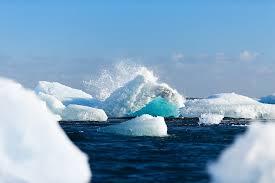 Natural swings in the Arctic climate have caused up to half the precipitous losses of sea ice around the North Pole in recent decades. Natural swings in the Arctic climate have caused up to half the precipitous losses of sea ice around the North Pole in recent decades.
However the rest was driven by man-made global warming as per a study.
The study indicates that an ice-free Arctic Ocean, often feared to be just years away, in one of the starkest signs of man-made global warming, could be delayed if nature swings back to a cooler mode.
Natural variations in the Arctic climate may be responsible for about 30-50 percent of the overall decline in September sea ice since 1979.
Sea ice has shrunk steadily and hit a record low in September 2012– late summer in the Arctic–in satellite records dating back to 1979.
The ice is now around the smallest for mid-March, rivalling winter lows set in 2016 and 2015.
The study, separating man-made from natural influences in the Arctic atmospheric circulation, said that a decades-long natural warming of the Arctic climate might be tied to shifts as far away as the tropical Pacific Ocean.
The findings could help narrow down huge uncertainties about when the ice will vanish.
|
▼ 4 states conduct synchronised elephant census in May 2017 [03-14-17]
For the first time in India, 4 states have conducted a synchronised elephant census in May 2017.
These 4 states are Odisha, West Bengal, Chattisgarh and Jharkhand.
These 4 states have a maximum number of human-elephant conflict prone regions in India.
These states will conduct the census based on an identical set of rules using the direct and indirect counting methods.
The direct counting method is based on sighting of elephants while the indirect method uses the elephant ‘dung decay’ formula, in which the analysis of dung is used to estimate the population.
The indirect method has already been used by Karnataka and Tamil Nadu.
Direct method can be used alone because it is not possible to cover entire area during the census.
As per the 2015 census, Odisha has 1,954 elephants while Jharkhand has 700, Chhattisgarh and West Bengal had approximately 275 and 130 elephants, respectively.
Odisha: Know More - Area: 155,820 km²
- Founded: 1 April 1936
- Capital: Bhubaneswar
- Population: 43.73 million (2014)
|
▼ Great Barrier Reef suffers bleaching 2 years in a row [03-14-17]
Great Barrier Reef in Australia's eastern coast has experienced an unprecedented second straight year of massive coral bleaching.
This marks the first time Great Barrier Reef has bleached two years in a row.
In March and April 2016, the 2,300 km reef had its most severe bleaching on record due to rising sea temperatures.
Coral Bleaching occurs when abnormal environmental conditions, such as warmer sea temperatures, cause corals to expel tiny photosynthetic algae, draining them of their colour.
The 2016 bleaching was more severe in the northern areas of the bio-diverse site.
But now more bleaching was being observed in the central part of the reef, which earlier had escaped widespread severe bleaching.
The back-to-back occurrence of widespread bleaching is resulting in decrease in stress tolerance of these corals, which means that they may not fully recover.
Know More: Great Barrier Reef - It is the biggest coral reef system in the world composed of over 2,900 individual reefs and 600 types of hard and soft corals.
- It was recorded as a World Heritage site in 1981.
- The reef is located in the Coral Sea, north east of Australia and covers an area of around 348,000 sq km.
- It is the world’s biggest single structure made by living organisms and is seen from the outer space.
- Area: 344,400 km²
- UNESCO World Heritage Site inscription: 1981
|
▼ Centre to frame plan to counter groundwater arsenic [03-8-17]
 The Centre will prepare an exhaustive plan to meet the challenges of arsenic contamination in groundwater in the Ganga-Brahmaputra fluvial plains. The Centre will prepare an exhaustive plan to meet the challenges of arsenic contamination in groundwater in the Ganga-Brahmaputra fluvial plains.
This has severely affected many districts of UP, West Bengal, Jharkhand, Bihar, Assam and Manipur.
There is an urgent need to start a nationwide movement to make people aware of arsenic contamination and urged individual and NGOs to join the government in this task.
Arsenic in groundwater is caused by natural geological processes. Long-term exposure to arsenic in drinking water can cause skin cancer and other diseases.
Though numerous measures, including alternate arrangement for supply of arsenic-free water and planting arsenic removal plants, have been taken in the last three decades, the entire population of the affected districts could not be covered.
Another aim is tapping alternate safe aquifers (water bearing permeable rock) for supply of arsenic-free groundwater.
Water wells have also been constructed tapping arsenic-free aquifers using state-of-the-art technology in parts of Ballia and Ghazipur districts of UP.
|
▼ India launches plan to phase out HCFC [03-7-17]
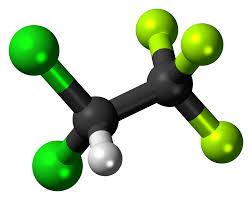 India on March 6, 2017 launched the country's latest plan to phase out the key refrigerant HCFC/hydrochlorofluorocarbon. India on March 6, 2017 launched the country's latest plan to phase out the key refrigerant HCFC/hydrochlorofluorocarbon.
This is as part of the ultimate goal to close the use of ODS or ozone depleting substances by switching over to non-ozone depleting and low global warming potential technologies.
A plan is meant for the 2017-2023 period.
The final goal is to phase out consumption and manufacturing of this ozone-depleting refrigerant under an accelerated plan by 2030.
The HCFC is currently used in various sectors including refrigeration, air-conditioning and foam manufacturing.
Over 190 countries had in 1987 reached an agreement under Montreal Protocol to phase out the ODS in a time-bound manner.
Under the Protocol, India has already successfully phased out the earlier generation of refrigerants, Chlorofluorocarbons (CFCs) and Halon.
The country is currently phasing out the HCFC in a gradual manner.
A multilateral fund, set up under the Protocol, has approved USD 44.1 million for India's HCFC management plan for the 2017-23 period.
The money will be used to help industries to switch over to alternatives and train manpower. Domestic industries are, however, expected to invest in research & development (R&D) to find out clean alternatives.
Industries must invest in R&D to carve out a niche for India at a global level. It will also create skills and generate employment.
India had also acted pro-actively to reach a fair deal in Kigali, Rwanda in 2016 to phase out another refrigerant, hydrofluorocarbon (HFC), which is currently being used as an alternative to ODS like HCFC.
He insisted that the government had worked hard to protect interests of domestic industries and it's time for the industries to invest in research to develop cutting-edge technology that can be used in future.
After phasing out HCFC, the country will have to move to a next stage where it will work on to phase out HFC as per an agreement reached by it along with 195 countries in Kigali last year.
Though HFC is not ODS, the countries had agreed to gradually phase it out due to its climate-damaging potential.
India has, however, a lenient schedule to phase out HFC. It will have to cut use of HFC by 85% by 2047 over the 2024-2026 level (baseline).
HCFC: Know More
- Hydrochlorofluorocarbons (HCFCs) are a large group of compounds.
- The structure is very close to that of Chlorofluorocarbons (CFCs), but including one or more hydrogen atoms.
- Under usual conditions, HCFCs are gases or liquids which evaporate easily.
- They are generally fairly stable and unreactive.
- HCFCs do not usually dissolve in water, but do dissolve in organic (carbon-containing) solvents. HCFCs are chemically similar to Hydrobromofluorocarbons (HBFCs), Chlorofluorocarbons (CFCs) and Halons.
- They display some similar properties, however they are much less stable and persistent.
- HCFCs are also part of a group of chemicals called as the volatile organic compounds (VOCs).
|
▼ TN City Tirunelveli attains 100 percent waste segregation [03-6-17]
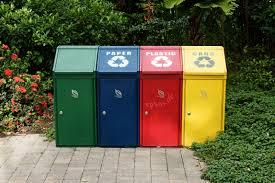 Tirunelveli has attained the feat of achieving 100% segregation of waste at source across households and establishments. Tirunelveli has attained the feat of achieving 100% segregation of waste at source across households and establishments.
It involved securing undertakings from each household to segregate biodegradable and non-biodegradable waste, campaigns though TV and local radio channels targeting housewives and roping in religious leaders and NGOs.
The city, with a population of 4.8 lakh, achieved this at a time when other cities are either weighing the risk of failure before starting any initiative or considering imposition of penalties on erring residents.
The Tirunelveli model can be easily adopted by other cities.
Tirunelveli, which has around 1.6 lakh households, took up this challenge in April 2016.
However, an intensive campaign started only on October 2, taking cue from the Solid Waste Management Rules 2016, which make it mandatory for all waste generators to segregate biodegradable and non-biodegradable waste before disposal, and hand over the segregated waste to authorised waste pickers-waste collectors.
While biodegradable waste is collected every day, non-biodegradable waste such as plastic is collected every Wednesday.
Tirunelveli: Know More
- Tirunelveli, also known as Nellai and historically as Tinnevelly.
- It is a city in the South Indian state of Tamil Nadu.
- It is the administrative headquarters of the Tirunelveli District.
- It is the sixth-largest municipal corporation in the state.
|
▼ Global warming melts snow slowly, lessens water on earth [03-1-17]
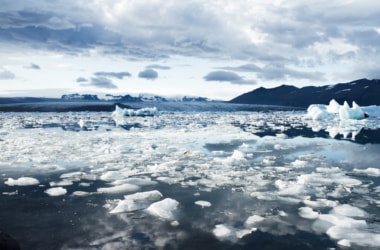 Researchers indicated global warming could melt mountain snow slowly, this may be a bad news for American West. Researchers indicated global warming could melt mountain snow slowly, this may be a bad news for American West.
Scientists have known that snow is starting to melt sooner as the climate warms. The research found early snowmelt is slower than in the summer, mostly because the sun is weaker and nights are cooler in winter's latter part and early spring.
Slower snowmelt could mean less water for humans. Snowmelt lingers in the soil and is taken up by plants or evaporates instead of flowing into reservoirs.
This finding could explain the reason computer models show snow-fed rivers expected to lower as the climate warms.
|
| Chronology of events |
|
The Great Backyard Bird Count (GBBC) 2017 report, which is under preparation, claims that nearly 45 per cent of the 1263 species available in India are found in Himachal Pradesh.
|
|
The Minister of State (Independent Charge) of Environment, Forest and Climate Change, Shri Anil Madhav Dave, launched the web portal for obtaining Coastal Regulation Zone clearances for improving the ease of doing business.
|
|
While Assam’s Kaziranga has continued fight against poaching activities as poachers killed 39 rhinos since the year 2012, the world heritage site get a remarkable achievement as increased the one horned rhinoceros population by 39 in a single year.
|
|
The Central Pollution Control Board (CPCB) has directed Tata Chemicals to shut down its fertiliser plant in Haldia (West Bengal) for violating liquid waste discharge rules. The CPCB directive follows an analysis of the company’s samples, which showed a non-compliance in effluent discharge norms.
|
|
To spread awareness on cleanliness as part of its ‘Swachhta Abhiyan’, the Ministry of Shipping is celebrating Swachh Bharat Pakhwada from 16th -31st March, 2017 and has undertaken various activities under this campaign.
|
|
The Uttarakhand High Court on 28 March 2017 ordered ‘complete’ ban on river mining activities in the State for four months. The order was passed by a division bench comprising Justice Rajiv Sharma and Justice Sudhanshu Dhulia.
|
|
The Govardhan Eco Village of International Society for Krishna Consciousness (ISKCON) at Wada taluka in Maharashtra has received an award in the “Best Water NGO-Water Education” category instituted by Water Digest.
|